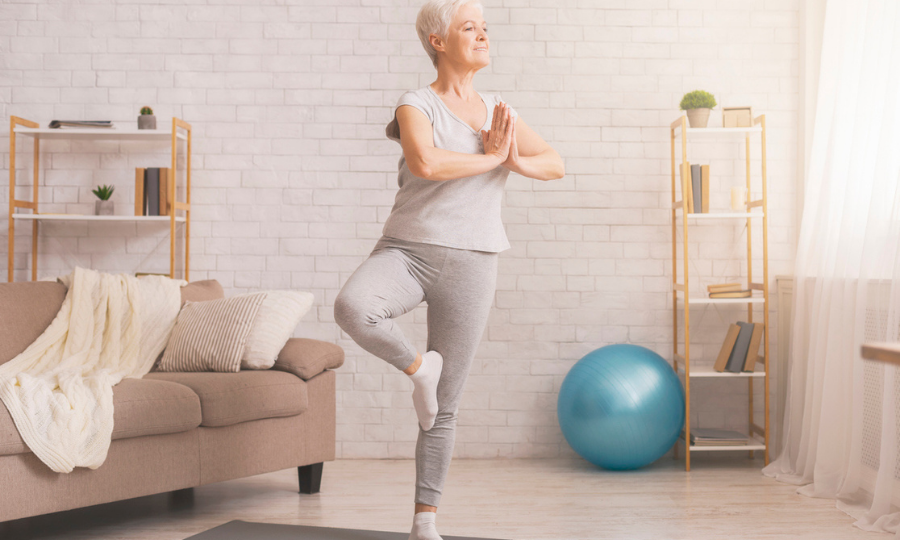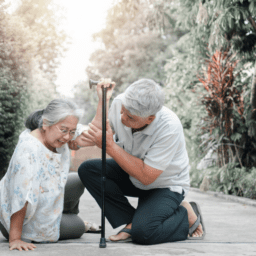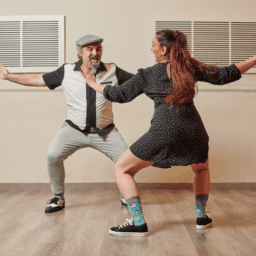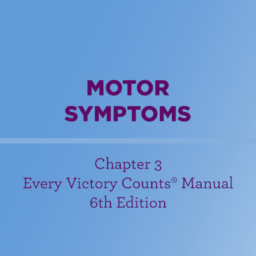Because Parkinson’s can impact the reflexes needed to maintain an upright posture, people with Parkinson’s may feel unstable while standing upright. This postural instability — better known as poor balance and coordination — can make certain physical activities difficult, and it also increases the risk of falling. The good news is that although postural instability is a common Parkinson’s symptom, it can be managed and mitigated with practice. By training your balance frequently, you can improve your postural stability and even regain some of your automatic balance reflexes.
The most beneficial exercises to improve your balance are ones that are physically and cognitively challenging. They require effort and force you to focus. You may feel a bit shaky or wobbly; so, be sure to hold onto a chair or wall (or, of course, stop) if you feel so unsteady that you may fall. Like other exercises that keep your body and mind challenged, balance practice should get progressively more difficult as your balance improves.
Ready to find your balance? Here are a few exercises to try:
Exercise One
From a sitting position in a chair, stand up. Is that easy? Sit back down and close your eyes. Now stand up. Was that more difficult? Now place a firm pillow on the floor by a wall where you can hold on if necessary. Stand on the pillow. Notice how your body feels standing on the pillow compared to standing on solid ground. Is it more challenging? Good—that means it’s improving your balance!
 Exercise Two
Exercise Two
Stand with your feet hip-width distance apart by a wall or piece of furniture you can hold on to if necessary. Slowly lift your right heel so only your toes of that foot are touching the floor. If this is easy, lift your right toes off the ground so that you are balancing only on your left leg. Continue to raise your right knee as high as you feel comfortable and hold the pose for as many seconds as you can. You can even hug your knee, like in the photo below. Then, repeat the exercise with your other leg. Complete 10 repetitions on each leg.
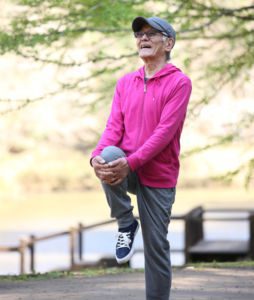
Exercise Three
Stand with your feet hip-width distance apart by a wall or piece of furniture you can hold on to if necessary. Shift your weight to your left leg and lift your right leg out behind you. Hold this pose for up to 30 seconds. If you’d like to make it more challenging, extend your arms out in front of you, like in the photo below. Repeat the exercise with the opposite leg.

Exercise Four
Stand with your feet hip-width distance apart by a wall or piece of furniture you can hold on to if necessary. Lift your right leg out to the right for a standing side-leg raise. Hold this pose for up to 30 seconds. Lower your right leg. Lift your left leg out to your left side. Hold for up to 30 seconds, then repeat the exercise again on the right and left sides. To make the exercise more challenging, raise your arms above your head as you complete the practice, or, if you’re feeling really strong, you can try using a resistance band around your foot and raising it up with your hand, like in the photo below.

Exercise Five
This pose, called Tree Pose or Vrikshasana in yoga, is a standing pose that can improve your balance. Stand with your feet together and bring your hands together at the center of your chest. Shift your weight to your left foot. Bend your left right outward (not as if you are marching but as if your right leg is forming two sides of a triangle with your left leg as its base) and lift it. Place the sole of your right foot on your side of your left shin or just above the knee, like in the photo below. Hold this pose for as long as you are able. Repeat with the other leg. To make this pose more challenging, lift your hands over your head, like in the photo below.

More Exercises for Balance
Activities that incorporate elements of balance—such as yoga, tai chi, Pilates, the Feldenkrais Method®, boxing, and dance—are ideal for people with Parkinson’s because they not only relieve stress but also help build balance control. Just as important? Aerobic exercise. Although not all forms of aerobic exercise incorporate balance in obvious ways, it is invaluable for regaining and maintaining balance. Research shows, again and again, that exercise reduces Parkinson’s symptoms and improves quality of life, and studies also show that aerobic exercise impacts the brain in a way that can help people with Parkinson’s regain automatic balance reflexes.
Practice, Practice, Practice
Remember that balance is learned; we taught ourselves as toddlers to balance by practicing, again and again and again. Do the same now. Find ways to challenge your balance as often as you can. (Here’s a neat app that might help!) Take it one step (or one leg lift) at a time, and you will be retraining your balance in no time.


